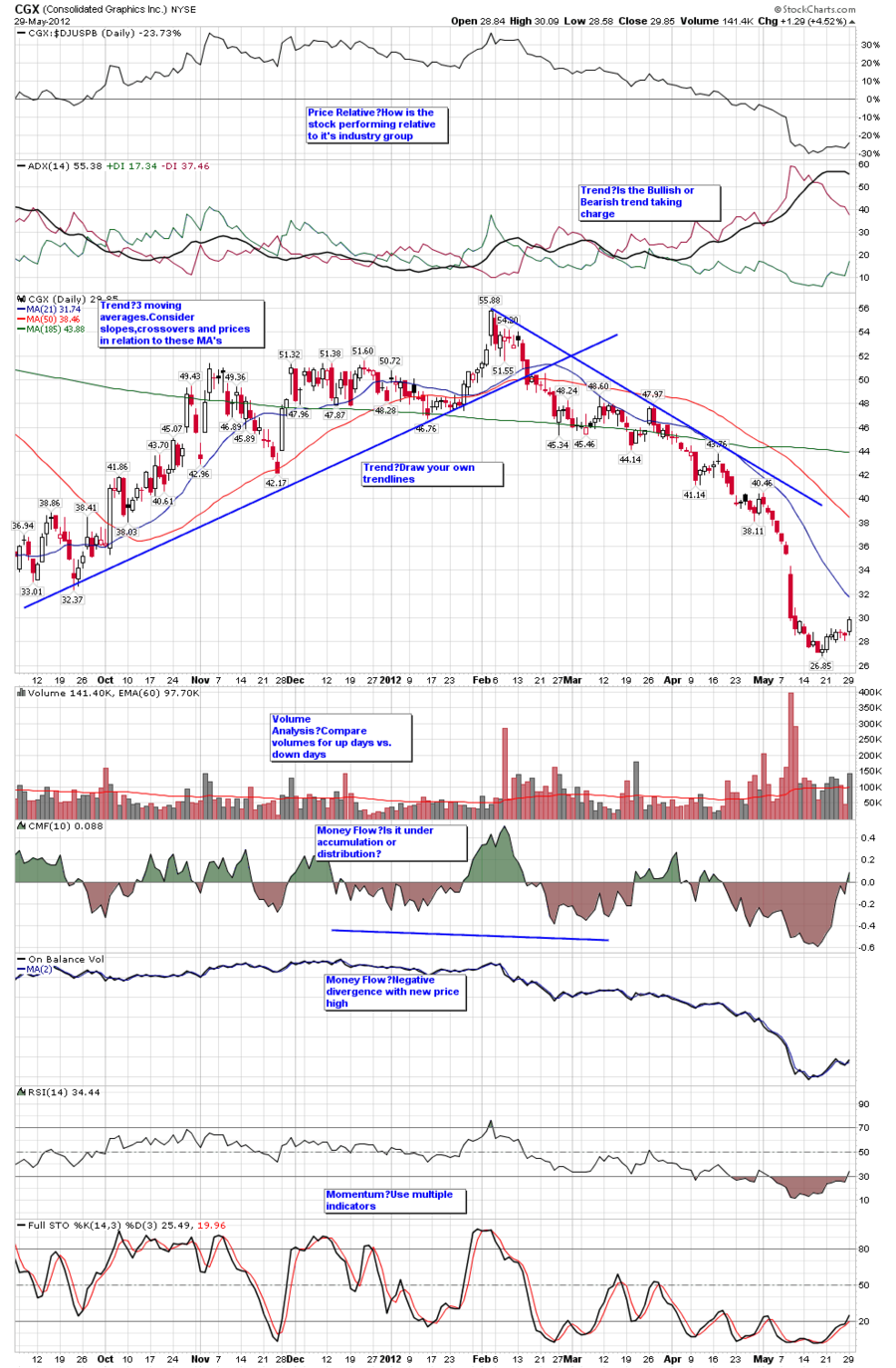I trust you read last week’s post, Part I on “The Art of Selling Well”. Those rules provide the foundation for what I will describe this week. I would hope that most investors reading about last week’s basic selling system “Three Descending Peaks” came away saying “I can design a better selling system than that.” My answer to you is:
- Yes, you can.
- Let’s do it!
My own selling system is a bit more complex and is based on technical clues piling up as well as on my own intuition, garnered from many years in the market. I feel I’ve earned my “selling badge.”
The selling paradigm I use monitors six basic elements:
- Price Relative
- Trend
- Volume based signals
- Momentum
- Bearish Patterns
- Personal money management rules
I use a simple matrix which expands on each of these elements. For example, when looking at Trend, I have line items asking questions such as:
- Has price broken my hand-drawn trendlines (short, intermediate, long term)?
- ADX reversed?
- Has slope changed on any of my three moving averages?
- Where is the close price in relation to my three moving averages?
- Has price broken any historically significant supports?
I then simply check each appropriate box with my big red pen as the selling clues present themselves. Your homework now is to expand and personalize the other five basic elements in your selling paradigm in a similar fashion as I did with Trend.
The benefits of this approach may not be obvious initially.
- Imagine back in time to the days when technical analysts drew their own charts by hand. Your physical participation with your red pen is powerful and helps you keep your finger on the true behavior of your equity.
- You are a visual person (or you wouldn’t be reading this). Visual analysis trumps all else. It’s difficult to ignore a vertical column of an increasing number of red checkmarks. These negative clues call you to action.
- Having a selling system in place allows you to focus on the equally challenging side of selling which is maintaining the discipline to regularly monitor your selling routines.
Selling is a challenge for all of us. The market is telling you what you don’t want to hear but you must force yourself to listen and act. As a successful investor, you must learn to put on a trade, take a loss if necessary, and then put on another trade without emotional baggage. It will help a great deal if you think in terms of probabilities. When you do take a small loss, you are in fact one step closer to your next big winning trade.
Trade well; trade with discipline!
-- Gatis Roze








